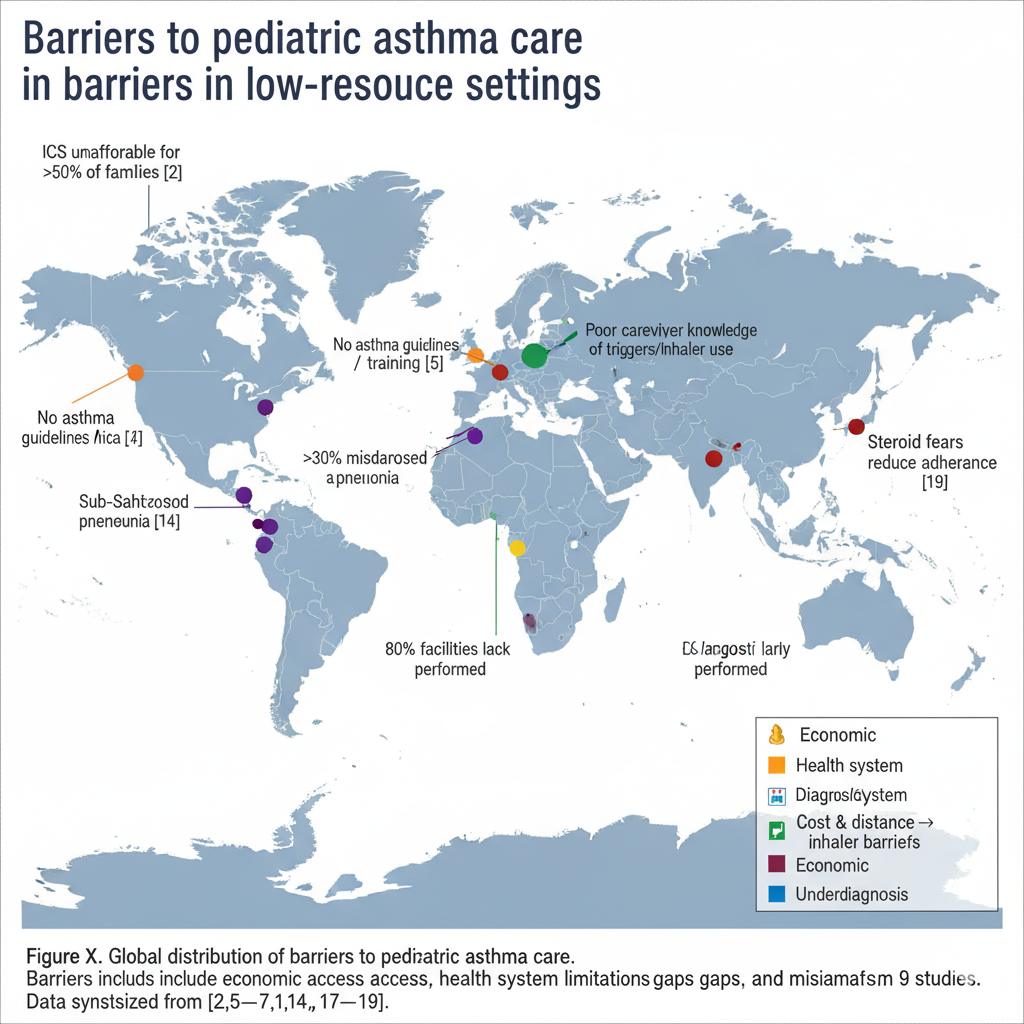Abstract


Challenges in the East Mediterranean Region (EMR) Policy Brief / Report-ready Executive Summary
The East Mediterranean Region (EMR) spans 22 countries and over 700 million people, facing a convergence of protracted conflict and displacement, health system fragility, a double burden of disease, climate and environmental stressors, and widening socioeconomic inequities. This overview synthesizes key problem domains and priority pathways to strengthen regional health security, equity, and resilience.
1. Introduction 2. Conflict & Displacement 3. Health Systems & Workforce 4. Double Burden of Disease 5. Environment & Climate 6. Inequities & Governance 7. Mental Health 8. Pathways Forward 9. Conclusion 1) IntroductionThe EMR from Morocco and Sudan to Pakistan and Afghanistan encompasses diverse economies and health capacities. Recurrent crises, displacement, and economic shocks have deepened vulnerability and disrupted essential services. The result is an uneven landscape of health outcomes, underfunded public systems, and dependencies on humanitarian mechanisms amid chronic instability.
2) Conflict, Displacement, and Humanitarian CrisesProtracted conflicts (e.g., Syria, Yemen, Sudan, Palestine, Afghanistan, Somalia) have displaced millions internally and across borders. Overcrowded settings with limited WASH infrastructure drive outbreaks (cholera, measles, TB) and interrupt immunization and maternal services. Surveillance and routine care falter, increasing excess mortality and long-term disability. Humanitarian access constraints and attacks on health care further degrade service continuity.
3) Health System Fragility and Workforce ShortagesMany EMR countries invest below 5% of GDP in health, yielding outdated facilities, supply chain gaps, and inadequate digital infrastructure. Workforce migration driven by insecurity and poor remuneration—creates chronic shortages, especially in rural and conflict-affected areas. Essential programs for maternal–child health, NCDs, and mental health remain under-resourced, while COVID-19 exposed limitations in preparedness, laboratory networks, and data systems.
4) The Double Burden of DiseaseCommunicable diseases remain endemic where vaccination and surveillance are disrupted, while non-communicable diseases (cardiovascular disease, diabetes, cancers, chronic respiratory disease) account for a growing majority of deaths. Tobacco use, unhealthy diets, and physical inactivity amplify NCD risk. Rapid urbanization and economic transitions accelerate obesity and metabolic disorders, straining already fragile systems.
5) Environmental and Climate-Related ChallengesHeat stress, drought, and water scarcity threaten food security and livelihoods. Major urban centers experience hazardous air pollution far above WHO guidelines, increasing respiratory and cardiovascular risk. Desertification and extre

New Findings in the East Mediterranean Region
A special issue spotlighting rigorous, practice-oriented health research across the EMR.
Volume 69 Issue 25 Year 2025 ISSN: — At a glance 38Articles published 14Countries represented 186Total Authors 4.9 avg/ paper 28%Acceptance rate 19 daysMedian submission → acceptance 72%Open access with data/code 42,380Pageviews (first 30 days) 12,430PDF downloads (first 30 days)Numbers above reflect editorial close for this issue. Update as needed.
Scope and thematic coverageThis issue assembles 38 peer-reviewed papers spanning public health, clinical medicine, pediatrics, surgery, epidemiology, and health systems research. The collection emphasizes reproducibility (72% share data/code), transparent reporting (100% of systematic reviews reported PRISMA), and regional policy relevance (61% include practice or policy recommendations).
Contributors span 14 EMR countries, led by Saudi Arabia, Sudan, and Egypt. Cross-border collaborations appear in 9 papers (23.7%), and 7 papers (18.4%) include at least one author from outside the EMR, strengthening methodological exchange.
Country Articles Saudi Arabia 9 Sudan 7 Egypt 6 Morocco 4 Jordan 3 Iraq 3 Tunisia 2 Algeria 2 United Arab Emirates 1 Lebanon 1 Total 38Table shows top contributors; additional EMR countries appear via co-authorships.
Bar chart visualizing per-country article counts 0 2 4 6 8 10 KSA SD EG MA JO IQ TN DZ UAE LB Figure 2. Articles by country (top 10 contributors). Peer-review pipeline and timelines 134Manuscripts submitted 40Desk rejections 94Sent for external review 38Accepted for publication
✦ JAREM Special Issue
Title: New Findings from the East Mediterranean and North Africa (ME-NA) Region
✶ Issue OverviewThe Journal of Advanced Research – East Mediterranean (JAREM) proudly announces a Special Issue focused on emerging discoveries and research innovations from the Middle East and North Africa (ME-NA) region. This issue is designed to address the growing need for localized evidence, regionally relevant scientific exploration, and context-based interventions in healthcare, public health, and applied research.
✪ Purpose of the Special IssueThis issue aims to disseminate new scientific findings, multidisciplinary solutions, and field-tested strategies that are uniquely relevant to the ME-NA region. From post-conflict health recovery to digital health innovation, this issue seeks to empower healthcare systems and policymakers across the region.
⧉ Scope of SubmissionThe issue welcomes contributions across all specialties, including but not limited to:
We invite original research articles, systematic reviews, meta-analyses, case series, field reports, and policy briefs that reflect the complexities, opportunities, and innovations in the ME-NA region.
Important: All submissions must clearly indicate their relevance to the East Mediterranean or North Africa region.
✦ Impact and ReachJAREM is indexed in Web of Science East Mediterranean (WOS-EMR) and has recently achieved a Q1 classification in the region. Publishing in this issue ensures wide regional visibility and academic recognition for your work.
➲ How to SubmitAuthors can submit their manuscripts via the journal’s online portal at: https://wos-emr.net/index.php/JAREM/index
For inquiries, contact the editorial team at: [email protected]
✉ Submission DeadlinesSubmission Open: August 15, 2025
Submission Deadline: November 30, 2025
Expected Publication: January 2026 (Volume 1, Issue 2)
Your contribution to this special issue will help shape the future of healthcare in one of the world's most dynamic regions. Let your work inspire action, inform policy, and improve lives across the Middle East and North Africa.

As one of the flagship journals in the East Mediterranean scholarly ecosystem, JAREM is uniquely positioned to lead the elevation of regional research standards. Through this special issue, we reaffirm our commitment not only to publishing high-impact content but also to mentoring emerging journals across the region in their pursuit of indexation and global visibility.
We actively support capacity-building and alignment with international standards for editorial transparency, research integrity, and bibliometric performance. As a regional leader under the Web of Science East Mediterranean (WOS-EMR) platform, JAREM seeks to catalyze a new generation of indexed journals capable of contributing to the global scientific dialogue.

